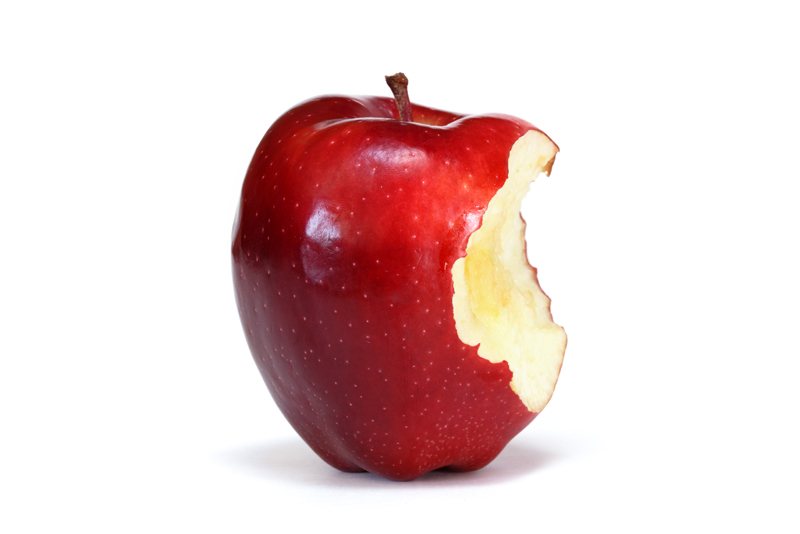Healing Fruits

The following list is a sampling of the healing benefits of fruits.
Apricots ~ this golden fruit is jam-packed with fiber, vitamin C, iron, boron, silica, and potassium. That means you can help your heart, fight fatigue, infection and improve your skin, hair, nails, regulate your blood pressure, keep your digestion moving smoothly, all in only about 16 tiny calories. If you are an ex-smoker you might want to make apricots part of your daily routine. Apricots, are rich in beta-carotene, they can cleanse your system of any nicotine leftover.
This is one case where fresh is not the best. Dried apricots has more important nutrients, they have three times the amount of fiber and vitamins.
*Avocadoes ~ benefits arteries, lowers cholesterol, dilates blood vessels. The main fat, monounsaturated oleic acid (also concentrated in olive oil, acts as an antioxidant to block artery-destroying toxicity of bad type LDL cholesterol. One of the richest source of glutathione, a powerful antioxidant, shown to block thirty different carcinogens and to block proliferation of the aids virus in test tube experiments.
Bananas ~ have no sodium, little fat, and no cholesterol. They are high in fiber and contain lots of vitamin C, B6, and folate as well as the minerals potassium and magnesium. The nutrients found in bananas help fight cancer, heart disease and a long list of other ailments.
Don’t toss the banana skin into the garbage it has a lot of nutrients to enrich your plants-calcium, sodium, silica, magnesium and phosphorus and potash. Just cut the skin into small pieces and bury it in the soil around your plants. Your roses and geraniums will love it.
Blueberries ~ act as an unusual type antibiotic by blocking attaching of bacteria that cause urinary tract infections. Contains chemicals that curb diarrhea. Also has antiviral activity and high in natural aspirin.
Cantaloupe ~ green and yellow (cantaloupe and honeydew) has anticoagulant blood-thinning activity. Orange melons contain antioxidant beta-carotene.
*Eggplant ~ a host of vitamins and minerals, it also contains important phytonutrients, many which have antioxidant activity. Research on eggplant has focused on an anthocyanin phytonutrient found in eggplant skin called nasunin. Nasunin is a potent antioxidant and free radical scavenger that has been shown to protect cell membranes from damage.
Figs ~ helps to prevent cancer. Both extract of figs and the fig compound, benzaidehyde, have helped shrink tumors in humans according to Japanese tests. Also laxative, anti-ulcer, antibacterial and antiparasitic powers. Triggers headaches in some people.
Grapes ~ a storehouse of antioxidant, and anticancer compounds. Red grapes (not the white or green grapes) are high in antioxidant quercetin. Grape skins contain resveratrol, showen to inhibit blood platelets clumping ( and blood clot formation) and boost good type HDL cholesterol. Red grapes are antibacterial and antiviral in test tubes. Grape seed oil also raises good type HDL cholesterol.
Kiwifruit ~ commonly prescribed in Chinese traditional medicine to treat stomach and breast cancer. High in vitamin C. that has multiple ant-disease activity.
Mangoes ~ are an excellent source of beta carotene (vitamin A) and vitamin C. Mangoes are loaded with cancer-fighting antioxidants and carotenoids, which may help prevent cancer and reduce the accumulation of plaque in arteries, preventing heart disease.
Papayas ~ are rich in vitamin C, a nutrient that helps your body metabolize amino acids, change folic acid into its active form and repair all tissues. Vitamin C is lost quickly when you're stressed.
Peaches ~ a powerful antioxidant vitamins A, C and E. Antioxidants help to make you less prone to heart disease, stroke, cataracts and some cancers. Peaches are also a source of fiber.
Pears ~ are high in Vitamin C and fiber and can be found in a variety of colors, including red, brown,. yellow, and green.
Pomegranates ~ are packed with tons of phytochemicals like potassium, which is great for lowering your blood pressure. Studies also suggest that pomegranates can slow the progression of prostate cancer and reduce the risk of atherosclerosis.
Raspberries ~ anti-viral, and anti-cancer activity and high in natural aspirin.
*Squash ~ very high in vitamin A, and also contains fiber, vitamins C, B6, B1, potassium, and folate. It has been found to contain phytonutrients, which may help prevent cancer.
Strawberries ~ anti-viral, and anti-cancer activity. Only eat organically grown. Strawberries have the highest amount of pesticide contaminates.
Tangerines ~ are high in antioxidant Vitamin C, which helps prevent cancer and boosts the immune system. They also contain folate, beta-carotene, and Vitamins B1, 2, and 3 they are also high in fiber.
*Tomatoes ~ a major source of lycopene, an antioxidant and anti-cancer agent that intervenes in devastating chain reactions of oxygen free radical molecules. Tomatoes are linked in particular to lower rates of pancreatic cancer and cervical cancer.
Turmeric ~ one of nature's most powerful healing spice in the world. Its main active ingredient is curcumin which gives turmeric its intense cadmium yellow color. Curcumin, studies show, has an anti-inflammatory agent and works as well as many anti-inflammatory drugs, it has reduced inflammation in animals and symptoms of rheumatoid arthritis in humans. In other tests, it lowered cholesterol, hindered platelet aggregation (blood clotting), protected the liver from toxins, boosted stomach defenses against acid, lowered blood sugar in diabetics, and was a powerful antagonist of numerous cancer-causing agents. Anti-cancer activity.
Watermelons ~ high amounts of lycopene and glutathione, antioxidant and anti-cancer compounds and also mild anti-bacterial, anti-coagulant activity.
*Fruits that are often thought of as vegetables
Apricots ~ this golden fruit is jam-packed with fiber, vitamin C, iron, boron, silica, and potassium. That means you can help your heart, fight fatigue, infection and improve your skin, hair, nails, regulate your blood pressure, keep your digestion moving smoothly, all in only about 16 tiny calories. If you are an ex-smoker you might want to make apricots part of your daily routine. Apricots, are rich in beta-carotene, they can cleanse your system of any nicotine leftover.
This is one case where fresh is not the best. Dried apricots has more important nutrients, they have three times the amount of fiber and vitamins.
*Avocadoes ~ benefits arteries, lowers cholesterol, dilates blood vessels. The main fat, monounsaturated oleic acid (also concentrated in olive oil, acts as an antioxidant to block artery-destroying toxicity of bad type LDL cholesterol. One of the richest source of glutathione, a powerful antioxidant, shown to block thirty different carcinogens and to block proliferation of the aids virus in test tube experiments.
Bananas ~ have no sodium, little fat, and no cholesterol. They are high in fiber and contain lots of vitamin C, B6, and folate as well as the minerals potassium and magnesium. The nutrients found in bananas help fight cancer, heart disease and a long list of other ailments.
Don’t toss the banana skin into the garbage it has a lot of nutrients to enrich your plants-calcium, sodium, silica, magnesium and phosphorus and potash. Just cut the skin into small pieces and bury it in the soil around your plants. Your roses and geraniums will love it.
Blueberries ~ act as an unusual type antibiotic by blocking attaching of bacteria that cause urinary tract infections. Contains chemicals that curb diarrhea. Also has antiviral activity and high in natural aspirin.
Cantaloupe ~ green and yellow (cantaloupe and honeydew) has anticoagulant blood-thinning activity. Orange melons contain antioxidant beta-carotene.
*Eggplant ~ a host of vitamins and minerals, it also contains important phytonutrients, many which have antioxidant activity. Research on eggplant has focused on an anthocyanin phytonutrient found in eggplant skin called nasunin. Nasunin is a potent antioxidant and free radical scavenger that has been shown to protect cell membranes from damage.
Figs ~ helps to prevent cancer. Both extract of figs and the fig compound, benzaidehyde, have helped shrink tumors in humans according to Japanese tests. Also laxative, anti-ulcer, antibacterial and antiparasitic powers. Triggers headaches in some people.
Grapes ~ a storehouse of antioxidant, and anticancer compounds. Red grapes (not the white or green grapes) are high in antioxidant quercetin. Grape skins contain resveratrol, showen to inhibit blood platelets clumping ( and blood clot formation) and boost good type HDL cholesterol. Red grapes are antibacterial and antiviral in test tubes. Grape seed oil also raises good type HDL cholesterol.
Kiwifruit ~ commonly prescribed in Chinese traditional medicine to treat stomach and breast cancer. High in vitamin C. that has multiple ant-disease activity.
Mangoes ~ are an excellent source of beta carotene (vitamin A) and vitamin C. Mangoes are loaded with cancer-fighting antioxidants and carotenoids, which may help prevent cancer and reduce the accumulation of plaque in arteries, preventing heart disease.
Papayas ~ are rich in vitamin C, a nutrient that helps your body metabolize amino acids, change folic acid into its active form and repair all tissues. Vitamin C is lost quickly when you're stressed.
Peaches ~ a powerful antioxidant vitamins A, C and E. Antioxidants help to make you less prone to heart disease, stroke, cataracts and some cancers. Peaches are also a source of fiber.
Pears ~ are high in Vitamin C and fiber and can be found in a variety of colors, including red, brown,. yellow, and green.
Pomegranates ~ are packed with tons of phytochemicals like potassium, which is great for lowering your blood pressure. Studies also suggest that pomegranates can slow the progression of prostate cancer and reduce the risk of atherosclerosis.
Raspberries ~ anti-viral, and anti-cancer activity and high in natural aspirin.
*Squash ~ very high in vitamin A, and also contains fiber, vitamins C, B6, B1, potassium, and folate. It has been found to contain phytonutrients, which may help prevent cancer.
Strawberries ~ anti-viral, and anti-cancer activity. Only eat organically grown. Strawberries have the highest amount of pesticide contaminates.
Tangerines ~ are high in antioxidant Vitamin C, which helps prevent cancer and boosts the immune system. They also contain folate, beta-carotene, and Vitamins B1, 2, and 3 they are also high in fiber.
*Tomatoes ~ a major source of lycopene, an antioxidant and anti-cancer agent that intervenes in devastating chain reactions of oxygen free radical molecules. Tomatoes are linked in particular to lower rates of pancreatic cancer and cervical cancer.
Turmeric ~ one of nature's most powerful healing spice in the world. Its main active ingredient is curcumin which gives turmeric its intense cadmium yellow color. Curcumin, studies show, has an anti-inflammatory agent and works as well as many anti-inflammatory drugs, it has reduced inflammation in animals and symptoms of rheumatoid arthritis in humans. In other tests, it lowered cholesterol, hindered platelet aggregation (blood clotting), protected the liver from toxins, boosted stomach defenses against acid, lowered blood sugar in diabetics, and was a powerful antagonist of numerous cancer-causing agents. Anti-cancer activity.
Watermelons ~ high amounts of lycopene and glutathione, antioxidant and anti-cancer compounds and also mild anti-bacterial, anti-coagulant activity.
*Fruits that are often thought of as vegetables
 |

Related Articles
Editor's Picks Articles
Top Ten Articles
Previous Features
Site Map
Content copyright © 2023 by Victoria Abreo. All rights reserved.
This content was written by Victoria Abreo. If you wish to use this content in any manner, you need written permission. Contact Victoria Abreo for details.



